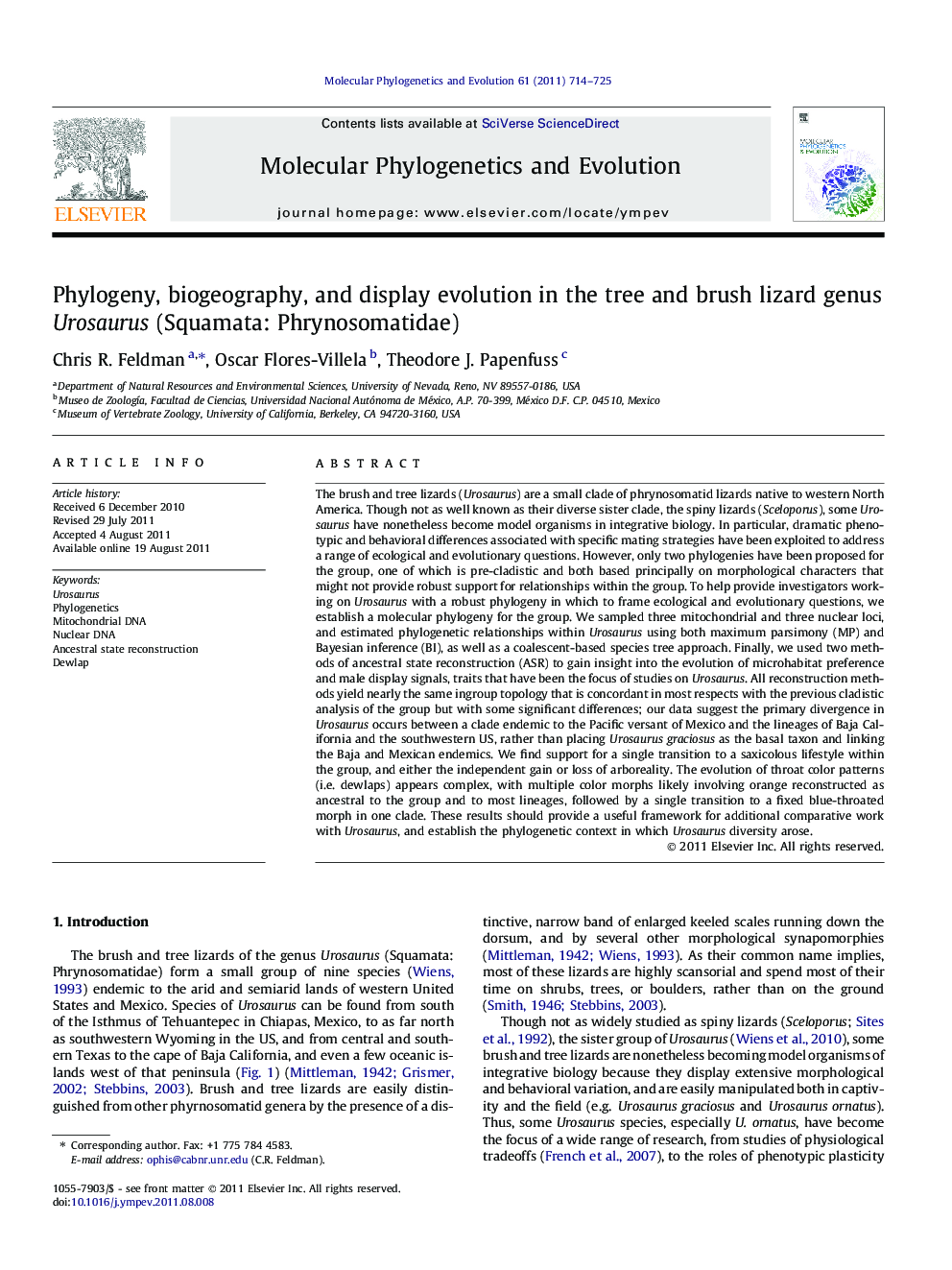| کد مقاله | کد نشریه | سال انتشار | مقاله انگلیسی | نسخه تمام متن |
|---|---|---|---|---|
| 5920611 | 1164297 | 2011 | 12 صفحه PDF | دانلود رایگان |

The brush and tree lizards (Urosaurus) are a small clade of phrynosomatid lizards native to western North America. Though not as well known as their diverse sister clade, the spiny lizards (Sceloporus), some Urosaurus have nonetheless become model organisms in integrative biology. In particular, dramatic phenotypic and behavioral differences associated with specific mating strategies have been exploited to address a range of ecological and evolutionary questions. However, only two phylogenies have been proposed for the group, one of which is pre-cladistic and both based principally on morphological characters that might not provide robust support for relationships within the group. To help provide investigators working on Urosaurus with a robust phylogeny in which to frame ecological and evolutionary questions, we establish a molecular phylogeny for the group. We sampled three mitochondrial and three nuclear loci, and estimated phylogenetic relationships within Urosaurus using both maximum parsimony (MP) and Bayesian inference (BI), as well as a coalescent-based species tree approach. Finally, we used two methods of ancestral state reconstruction (ASR) to gain insight into the evolution of microhabitat preference and male display signals, traits that have been the focus of studies on Urosaurus. All reconstruction methods yield nearly the same ingroup topology that is concordant in most respects with the previous cladistic analysis of the group but with some significant differences; our data suggest the primary divergence in Urosaurus occurs between a clade endemic to the Pacific versant of Mexico and the lineages of Baja California and the southwestern US, rather than placing Urosaurus graciosus as the basal taxon and linking the Baja and Mexican endemics. We find support for a single transition to a saxicolous lifestyle within the group, and either the independent gain or loss of arboreality. The evolution of throat color patterns (i.e. dewlaps) appears complex, with multiple color morphs likely involving orange reconstructed as ancestral to the group and to most lineages, followed by a single transition to a fixed blue-throated morph in one clade. These results should provide a useful framework for additional comparative work with Urosaurus, and establish the phylogenetic context in which Urosaurus diversity arose.
Highlights⺠Primary splits is between species of Pacific versant of Mexico and remaining taxa. ⺠Both vicariance and dispersal have played a role in the history of the group. ⺠Complex throat color morph evolution, with multiple morphs ancestral in most lineages.
Journal: Molecular Phylogenetics and Evolution - Volume 61, Issue 3, December 2011, Pages 714-725